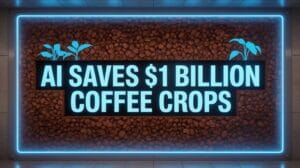Because the tiny coffee berry borer (CBB) hides inside berries, researchers at Edith Cowan University have replaced slow eye-checking with smart imaging. The new system uses drone surveillance and automated detection to spot frass, a brown powder left by the beetles. Instead of hunting the insect itself, it searches for the pattern of frass, which branches like small tree veins inside the berry. A camera on a small flying robot clicks pictures while software, built with L-system math, sorts the good berries from the bad in moments.
Old methods couldn’t keep up. Human scouts need a magnifying glass and lots of time to peer at each cherry. They miss early bites, and the damage shows only after the bean is ruined. Traps catch beetles but don’t tell where the rest are hiding. One missed berry can spread the pest across a whole farm.
Magnifiers and traps can’t catch the borer hiding inside—one berry missed, a whole farm lost.
The imaging fix works faster. Color and shape clues guide the computer to mark infected fruit with a virtual red flag. A single drone sweep covers more rows in one morning than a crew can reach in a week. Once the flags appear, growers know exactly which plants need help before the loss grows. The software, tested across South American farms, proved effective against the same beetle that caused $1 billion in global losses during 2023.]
Global losses hit one billion dollars in 2023. South America, Indonesia, and Africa felt the hit most. Quick pictures promise fewer beans lost. Faster data means farmers can use fewer sprays and still protect their crop. The same algorithm can ride any drone, so large estates and small plots can both adopt it.
Micro-CT scans add another layer of insight. High-resolution X-rays show egg tunnels and larva stages inside the same cherry. Scientists watch how the beetle grows without cutting the berry open. The pulled images feed back into the software, teaching the bot to spot even tinier traces of frass. Each loop makes the automated detection sharper, trimming losses down from dollars to pennies per plant.


